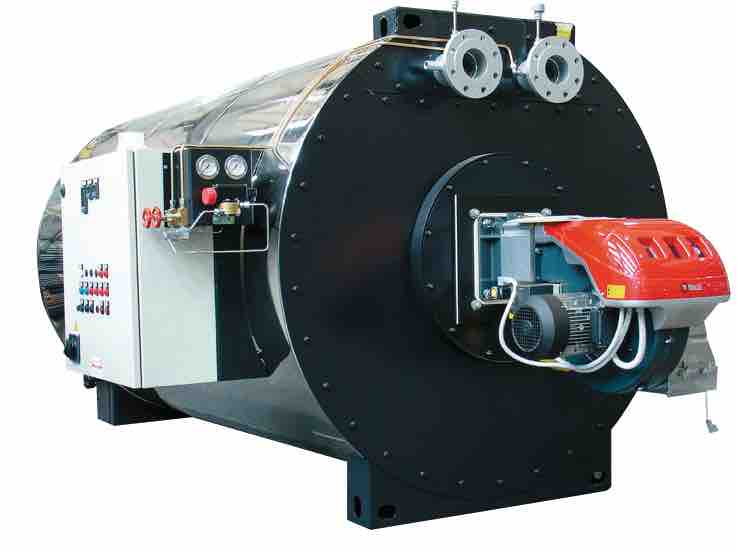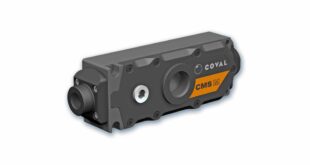Etienne Fourie looks at how thermal fluid heaters work, the key features and benefits that make them so popular and the most common applications they are used in and why
Thermal fluid systems have changed process heating, making large, energy-hungry and heavily manned plant rooms a thing of the past for the majority of industries. Thermal fluid heating systems are compact, easy to use and offer an overall saving in energy that is hard to beat.
Unlike a steam system, there is no change of state of the fluid in thermal fluid systems, so no condensate and therefore no flash steam losses, no blow-down losses or make-up water and no effluent discharge. Thermal fluid systems operate completely corrosion and frost free without the need for expensive chemical treatment. Furthermore, users are not confronted with the well-known problems of high pressure to reach high temperatures. It all adds up to substantial savings for the operator.
Thermal fluids typically operate at up to 350°C at atmospheric pressure and can remain pumpable down to -20°C and lower with special fluids, which makes it a solution suitable for a wide range of applications.
Thermal fluid heating is based on a similar principle to a simple hot water system. It consists of a heater connected to carbon steel flow and return pipework which can simultaneously provide heat to one or more users or systems. Instead of water running through the closed loop pipework, a thermal fluid – which remains liquid throughout the operation – is used as the heat transfer medium. The heat is transferred by turbulent liquid flow at the heat transfer surface. The fluid then passes in a closed circuit back to the Thermal fluid heater for reheating without further loss of energy.
Different fluids – typically mineral and synthetic-based fluids – can be used to meet specific process heating requirements, making it a very flexible system.
Thermal fluid heaters have outpaced steam generation in the majority of new process heating applications. There are numerous applications for thermal fluid heating, but here we look at some of the most common solutions.
Pressing, curing and moulding
Many processes involve changing the shape or form of material using heat; these include press heating and cooling, moulding processes, extruder heating and cooling, laminating, autoclave heating, drying and forming, furniture manufacture, automotive manufacturing and composite materials. Where steam, electricity or direct fuel firing have been traditionally used, thermal fluid systems can offer greater control, higher quality, lower cost and repeatability.
Design of the system flow characteristics to suit the process ensures even heat distribution across the face of multi daylight presses without the risk of condensate logging often associated with steam systems.
Simple and accurate temperature control is readily achieved using a variety of techniques that have been developed and proven over many years.
Steam, when required for direct contact with the process, can be easily and safely generated as part of a thermal fluid system using Unfired Steam Boilers.
Tanks, vessels and cookers
Storage of product which must be maintained at any given temperature is achieved at the lowest practicable cost when thermal fluid heating is used. Individual tanks or multi-tank systems, such as can be found on continuous metal treatment plants, demonstrate the flexible nature of these systems with each tank controlled at the required temperature using the simplest automated techniques.
Reactor and blending vessels for food, chemical and pharmaceutical applications with and without differential temperature control are key applications. Flour millers Whitworth Bros. Ltd. has several Babcock Wanson TPC Thermal Fluid Heaters for its flour heat treatment process at its Selby site. They are used to pre-heat filtered air, which is then used as part of the heat treatment process of flour which changes the baking properties for suitability in different food products, such as sauces, batters etc. Thermal fluid heating was selected over other methods for this process due to its lower maintenance requirements, its non-corrosive nature and ability to run at low pressures.
Secondary circuits can be readily incorporated to provide higher fluid flow rates, different temperatures and very close control, all fed from the primary circuit. This enables several temperature processes to be used on a single system.
Food-grade thermal fluids are available when required.
Printing, coating, laminating and drying
Roller heating, continuous drying and laminating is achieved with the greatest accuracy and lowest operating cost with thermal fluid heating due to its advanced temperature control, simple automation and unattended start/stop design. All this means the highest quality products at the lowest production cost.
Multiple heaters can be installed on a single system and remotely controlled to match the demands of production. Automation is simple to apply with the latest controls able to provide remote monitoring of the complete process.
Where required, thermal fluid heating can be integrated into VOC abatement technology to offer a complete energy and environmental solution.
Heating and cooling systems
With Thermal Fluid Heating, heating and cooling can be combined in a single system, making them suitable for chemical and pharmaceutical manufacturing, press and moulding processes, exothermic chemical reaction control and applications where multiple independent variable temperature processes are involved.
Combined simple heating and cooling circuits operating independently within the main system provide for special applications which demand fast process times and very accurate control of temperature. Secondary pumps and individual coolers working together with the primary heating circuit at different temperatures can be installed to meet any particular process requirement.
ACS UK in Cambridgeshire uses a Babcock Wanson TPC1500B Thermal Fluid System to heat and control the cooling of its press producing lightweight panels and mouldings for the transport sector. A single fluid is used throughout the system for ease of operation and maximum efficiency. Control of the complete heat/cool cycle is achieved using a bespoke TCU and dedicated software which allows for up 50 heating/cooling profiles to be stored, with each profile offering up to six temperature ramp and dwell stages. The customer has cited benefits as a reduction in process cycle time by up to 30% from the previous heat processing method, plus reduced maintenance costs, reduced energy costs and an increase in available floor area.
Thermal fluid heaters are incredibly versatile as you can see from just some of these most common applications, but there are many many more. Their combination of ease of use, small footprint and, most importantly of all in the current climate, their energy saving operation, have made them the number one choice of heat processing technology for industry.
Etienne Fourie is Technical Sales Manager, Babcock Wanson.
 Engineer News Network The ultimate online news and information resource for today’s engineer
Engineer News Network The ultimate online news and information resource for today’s engineer






